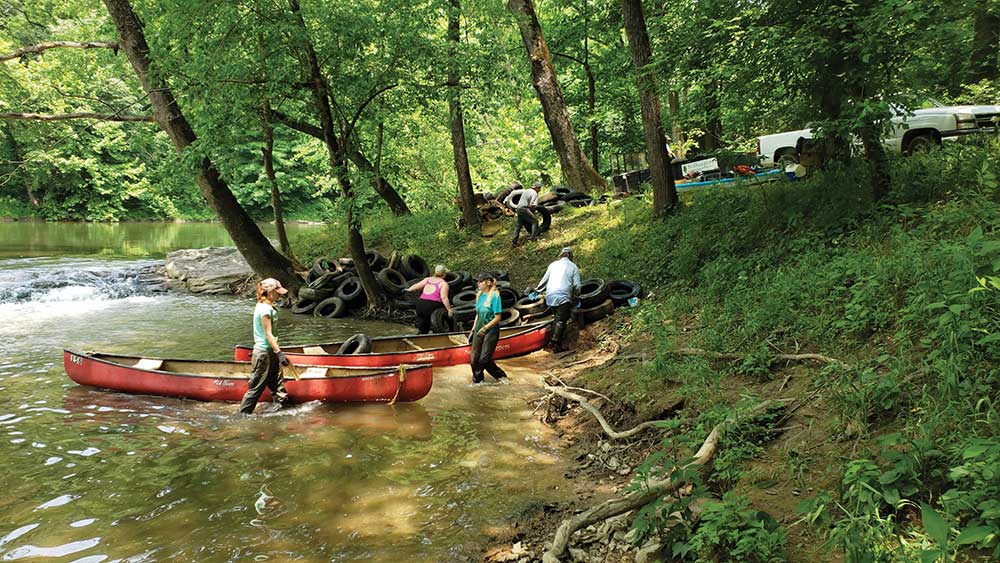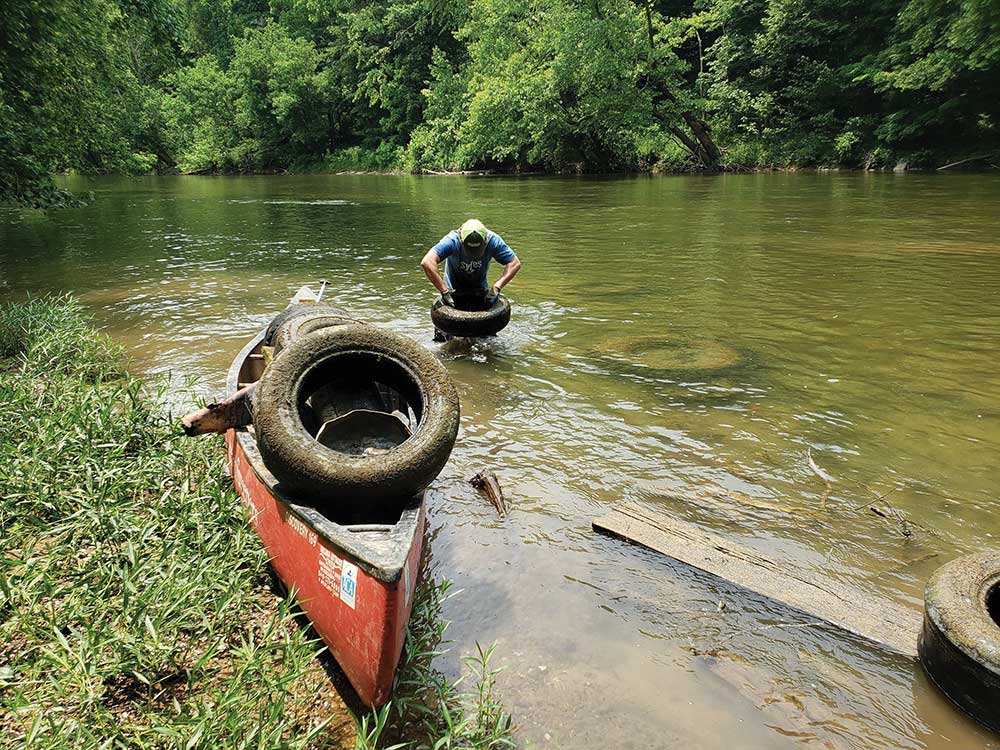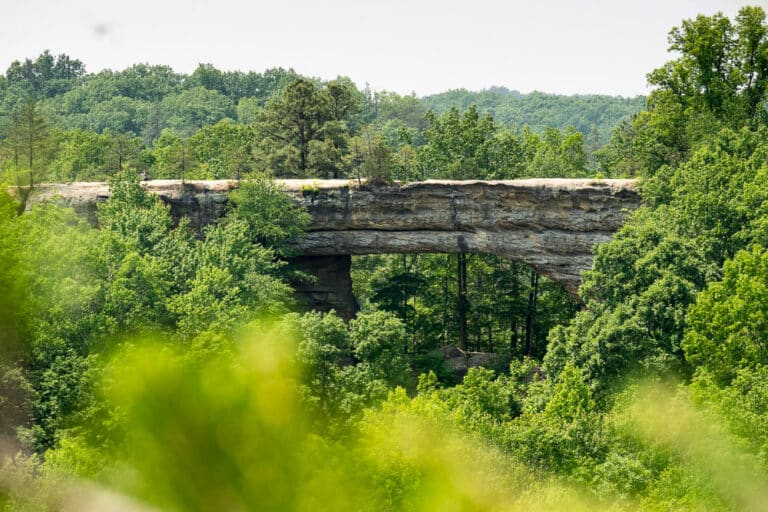Tires being removed from the Clinch River in southwest Virginia.
Communities Tackle Trash Along Virginia’s Clinch River
The Clinch River’s list of superlatives runs nearly as long as its 130-mile journey through southwest Virginia. The waterway is the Tennessee River’s northernmost headwater tributary. It’s also home to a stunningly biodiverse collection of freshwater fish and mussels, and it has recently become the epicenter of a burgeoning rural economy based around the outdoors.
But then there are the tires.
Automobile tires, tires for farm equipment, behemoth tires built for industrial machinery—the Clinch has them all. In fact, upwards of 10,000 tires may currently be sitting along the bottom of a 60-mile reach of the river in southwest Virginia, according to Maddie Gordon, the owner of St. Paul, Va.’s Clinch Life Outfitters. “When you’re floating at a certain level of water,” she says of one rapid, “you’re playing bumper cars with tires.”
No one is certain how all those tires ended up in the water. Perhaps it was illegal dumping or debris washed downstream after the Appalachians’ apocalyptic Flood of 1977. Maybe it was a combination of both. Regardless of their source, the tires have been in the river for decades. And in recent years, as communities along the Clinch began to develop put-ins for boaters and as Virginia announced the creation of a new state park on its banks, all those tires—and a staggering amount of other industrial debris—remained.
Cleaning up any river can be daunting, but that hasn’t stopped Gordon and others with StreamSweepers, an environmental nonprofit based out of Orange, Va., from taking on the challenge. StreamSweepers was founded in 2013 as a program for the Center for Natural Capital, with the initial goal of addressing the health of the Virginia Piedmont’s Rapidan and Robinson Rivers. Kira Lander, the organization’s Mid-Atlantic program manager, says that work has since grown in scope. “We currently oversee volunteer groups doing trash and river health assessments on the Hazel and Middle Rivers and hope to continue to be able to offer assistance to similar groups all across the Mid-Atlantic,” Lander says.
StreamSweepers began its focus on the Clinch in 2017, and Lander says that the river’s unique biodiversity and environmental challenges caught their attention. “Due to the very high amounts of trash and the proposed acquisition of riverside land for a new Virginia state park,” she explains, “we knew that StreamSweepers had a lot to offer southwest Virginia.”

While planning a river cleanup might sound straightforward—simply locate trash and remove it—StreamSweepers has done more than clean up debris. Prior to tackling a new stretch of river, the group first performs detailed reconnaissance, floating the waterway and marking the location of problem areas with a GPS unit while also assessing river habitat. That leaves the group with an interactive map that can be used to target future cleanup work. The group has also collaborated with wildlife officials to ensure that their efforts minimize risks to the river’s fragile aquatic life.
For Gordon, the work has been personal. “My grandfather used to take me fishing (on the Clinch) when I was little,” she says. “It’s always held a special place in my heart.” Gordon is now widely regarded as a regional expert on the river’s floating and fishing opportunities. She joined StreamSweepers shortly after the start of their work in the watershed and is now their Clinch River project manager.
Following the completion of the team’s initial assessment of the Clinch, the grunt work of removing all that trash began. A key part of StreamSweepers’ strategy has been to involve youth in cleanup efforts as a Job Corps-style initiative, a factor that both Gordon and Lander say has been essential to each cleanup’s success. “That’s one of the main goals of StreamSweepers,” Gordon says of the organization’s work with youth, “to make them realize that there’s something bigger than themselves that they can be a part of.” She stresses that several team members have even refocused their career goals towards environmental work as a result of their experience on the water.
Since first beginning work along the river, the team has cleaned 13 miles of the Clinch, removing 14,000 pounds of trash and 1,000 tires spread across the waterway’s path through the Virginia mountains. They have plans to expand that work this year.
And as long as there’s a river bisecting the region’s communities, there will be more debris to remove. While no single cleanup effort can fully solve any stream’s problems, both Gordon and Lander are optimistic that their work can inspire both current and future generations to be better stewards of the mountains’ natural resources. “I can speak for myself,” says Lander, who incorporated the data she collected as a member of the group’s cleanup team into her academic career in the environmental field. “StreamSweepers changed my life.”








